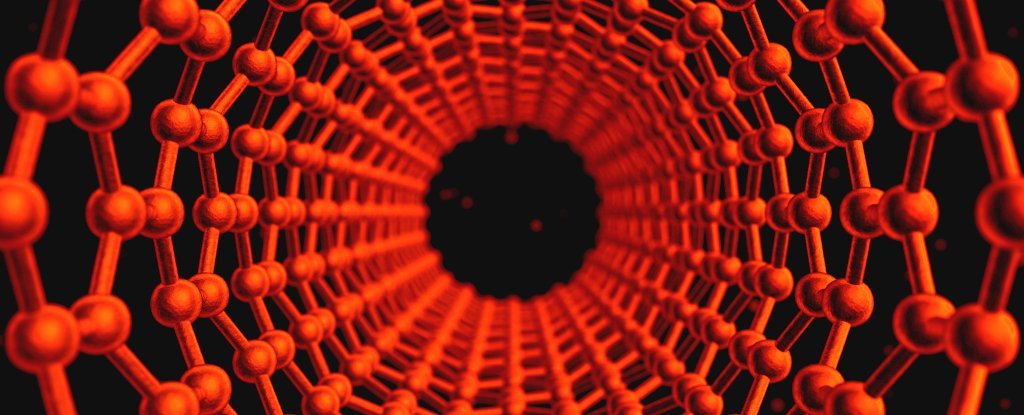Tatiana Shepeleva/Shutterstock.com
Confirmed: Electrons Flowing Like Liquid in Graphene Are Insanely Superconductive
FIONA MACDONALD
23 AUG 2017
Electrons have been caught flowing through graphene like a liquid, reaching limits physicists thought were fundamentally impossible.
This type of conductance is known as 'superballistic' flow, and this new experiment suggests it could revolutionise the way we conduct electricity.
If that's not crazy enough, the super-fast flows actually occur as a result of electrons bouncing off each other, something that high school physics tells us should slow conductivity down.
So what's going on here? For decades, scientists had speculated that, under some circumstances, electrons might stop behaving as individuals and collide so often that they actually begin to flow like a viscous fluid with all kinds of unique properties.
But it was only last year that researchers confirmed the phenomenon, showing for the first time that, even at room temperature, electrons within graphene could act as a fluid 100 times more viscous than honey - something the researchers referred to as "quantum weirdness arising from [electrons'] collective motion".
Now the same team, led by Sir Andre Geim - the University of Manchester physicist who won the 2010 Nobel Prize for his work characterising graphene - has shown that this liquid electron phenomenon is even crazier than we thought.
By unlocking this fluid-like behaviour, the researchers were able to observe electrons in graphene smashing a fundamental limit for electrons in a normal metal, known as Landauer's ballistic limit.
This is some of the first experimental confirmation demonstrating just how powerful a whole new type of physics could be, and, importantly, it also suggests we could be on the verge of an entirely new way to shuttle electricity through materials with close to zero resistance.
Right now, that's something that superconductors can achieve, but the ability only emerges at super-chill temperatures below 5.8 K (-267°C or -450°F). But in the latest study, the researchers were able to observe this so-called superballistic flow within graphene at the relatively warm temperature of 150 K(-123°C and -190°F).
In fact, resistance actually decreased as temperature increased, the opposite of what you'd expect to happen.
For now this is just one study, and independent teams will need to verify the Univeristy of Manchester results. But finding a way to more efficiently conduct electricity at higher temperatures is one of the 'Holy Grails' of physics, as it would pave the way for things like super-efficient computers, or electricity grids that don't lose 7 percent of their energy as heat.
That's exciting enough, but for the physics community, the real breakthrough here is the fact that this is one of the first detailed explorations of this new liquid-like electron behaviour - and it suggests we're only just scratching the surface of how weird it really is.
What's so strange is that this type of electron flow counterintuitive to everything else we know about conductance - which is that the more electrons scatter, the less conductive a material is.
That's why graphene is already many times more conductive than, say, copper - its neat 2D structure has far fewer imperfections than regular metals, so electrons travelling through it scatter less and move faster, which is known as ballistic flow.
But the opposite occurs when electrons begin to work together and behave like a fluid - something that this latest study shows us is capable of unlocking superballistic flow.
"We know from school that additional disorder always creates extra electrical resistance," said Geim.
"In our case, disorder induced by electron scattering actually reduces rather than increase resistance."
"This is unique and quite counterintuitive: Electrons when make up a liquid start propagating faster than if they were free, like in vacuum".
How does it work? Instead of increasing resistance, sometimes when electrons collide with each other, they can actually start to work together and ease the flow of current.
If you think of the crystals within graphene as a channel that electrons need to flow through, electrons slow down the most when they bounce off the edges of the channel, losing momentum.
In this fluid behaviour, however, some electrons remain near the edge, effectively buffering other electrons from colliding with those regions and slowing down.
As a result, some electrons become superballistic as they are guided through the channels within graphene, by bouncing off their friends.This is the same thing that happens in a river - the current is fastest in the middle.
Sir Geim and his team have called this new physical quantity 'viscous conductance'. And seeing as this is one of the first studies into its abilities and it's already breaking through major physical limits, we're pretty sure you're going to be hearing a whole lot more about it.
Watch this space.
The research has been published in Nature Physics.
- Forums
- ASX - By Stock
- HXG
- Graphite News
Graphite News, page-7
Add HXG (ASX) to my watchlist
 (20min delay) (20min delay)
|
|||||
|
Last
2.1¢ |
Change
-0.002(8.70%) |
Mkt cap ! $11.79M | |||
| Open | High | Low | Value | Volume |
| 2.3¢ | 2.3¢ | 2.1¢ | $1.912K | 83.41K |
Buyers (Bids)
| No. | Vol. | Price($) |
|---|---|---|
| 5 | 456427 | 2.1¢ |
Sellers (Offers)
| Price($) | Vol. | No. |
|---|---|---|
| 2.4¢ | 50568 | 1 |
View Market Depth
| No. | Vol. | Price($) |
|---|---|---|
| 1 | 100000 | 0.024 |
| 2 | 386221 | 0.023 |
| 2 | 147000 | 0.022 |
| 5 | 1217500 | 0.020 |
| 2 | 54368 | 0.019 |
| Price($) | Vol. | No. |
|---|---|---|
| 0.025 | 498695 | 1 |
| 0.026 | 289259 | 4 |
| 0.027 | 396549 | 3 |
| 0.028 | 281127 | 2 |
| 0.029 | 50000 | 1 |
| Last trade - 11.44am 28/11/2024 (20 minute delay) ? |
| HXG (ASX) Chart |





